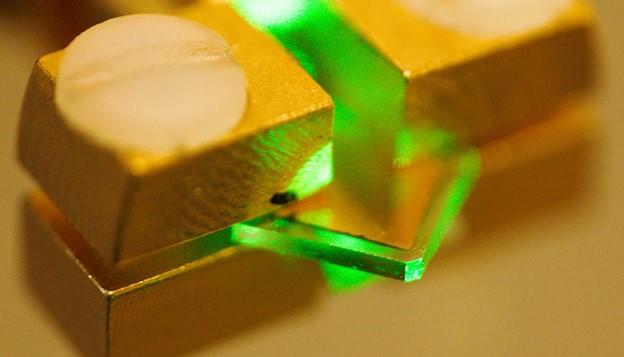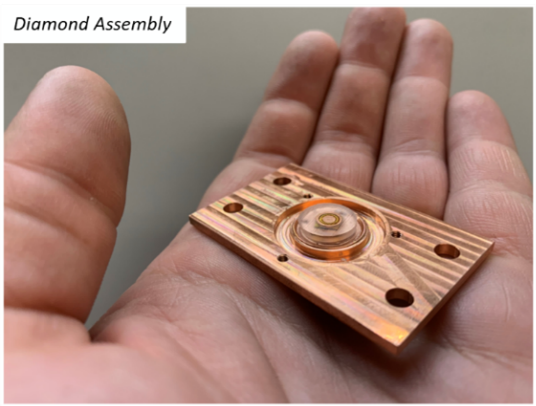High frequency switching is required for many applications including inverters, pulsed power, and generation of electromagnetic waves. Previous photoconductive switches have been based on semiconductors such as Si, GaAs, GaN, or SiC. Diamond is superior to these materials in terms of critical electric field, carrier mobility, and thermal conductivity, making it the best candidate for photoconductive semiconductor material.
Design and construction of a photoconductive switch requires a diamond photoconductor illuminated by light of a certain excitation wavelength. The diamond material is chosen to be doped with substitutional nitrogen to act as a source of electrons. The device architecture allows maximum light entering the aperture. The top and bottom electrodes are made of ultra-wide bandgap (UWBG) transparent conductors or materials with high reflectivity.
The diamond photoconductive switch has higher efficiency (~20%) and output power (~50 kW) compared to conventional switches.
LLNL’s diamond-based photoconductive switch technology has numerous advantages over traditional optical switches, such as:
- Maintains high critical electric field
- Higher breakdown voltage
- Diamond has the best combination of material properties for switches
- High power microwave sources
- High frequency amplifiers and pulse generators
Current stage of technology development: TRL 5


